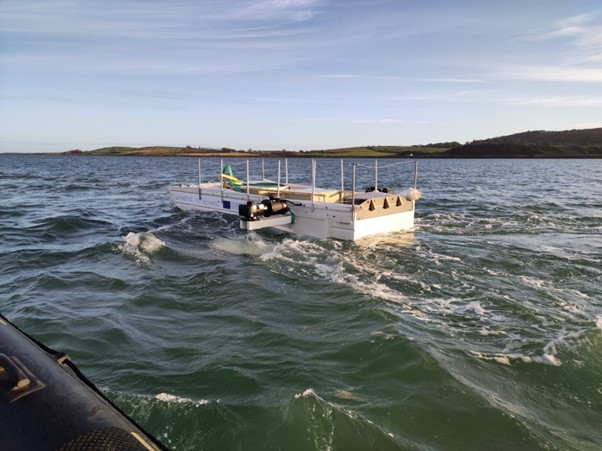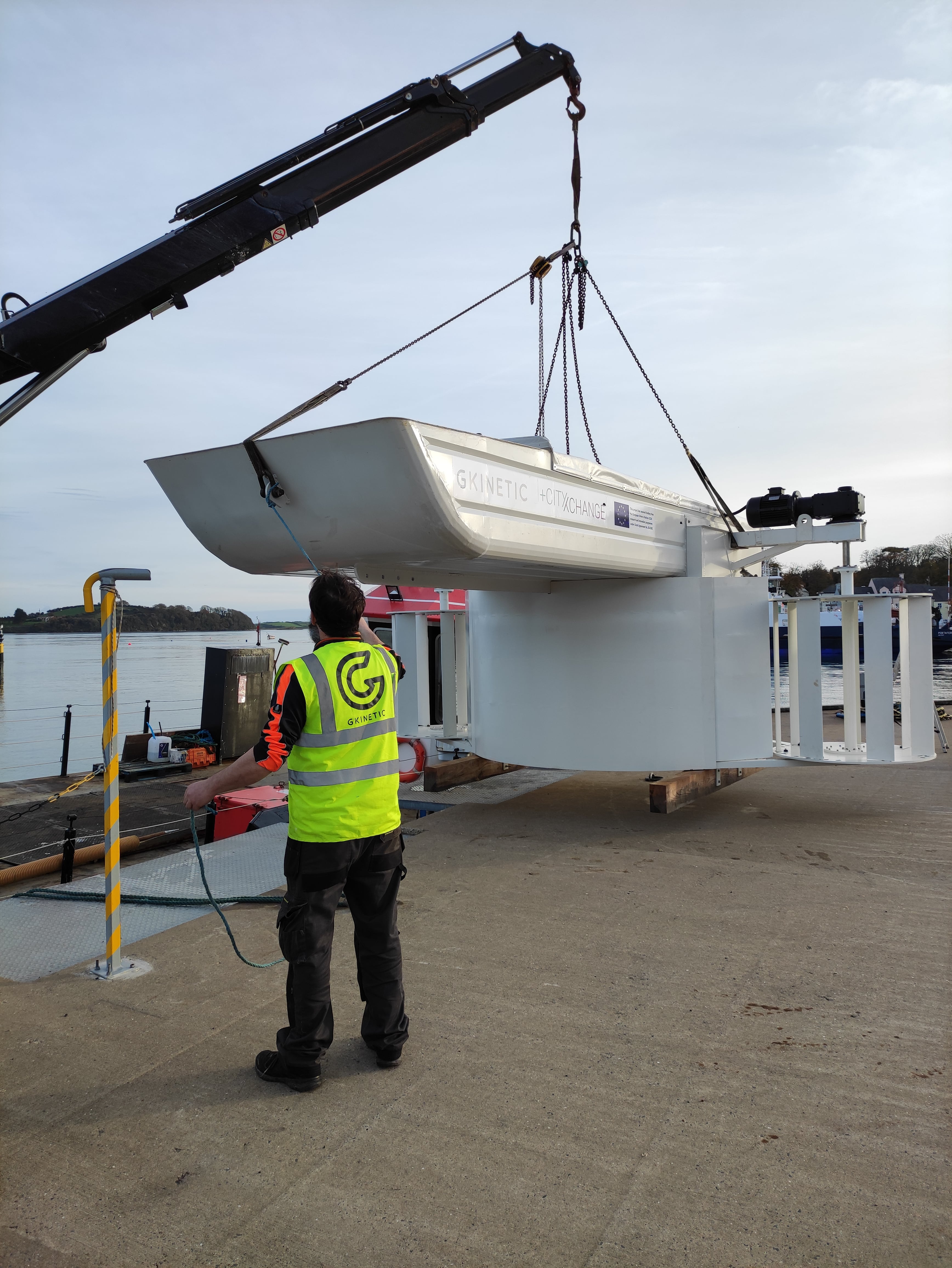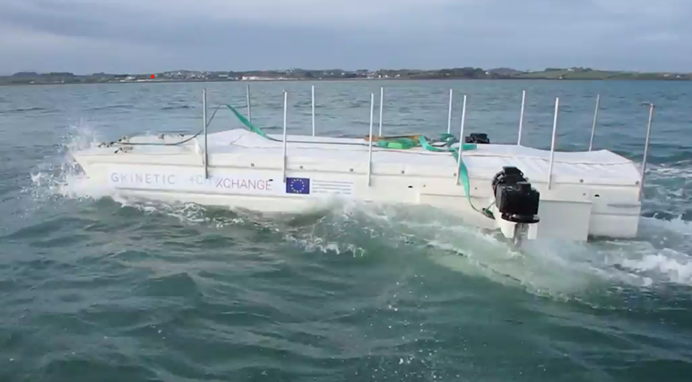GKinetic Deployment Milestones aim to Fast Track Commercial Uptake.
Share
Hydrokinetic solutions provider GKinetic Energy Ltd has concluded a pivotal deployment of its 12kW unit at Strangford Lough, Northern Ireland. The deployment has resulted in major technical, commercial and environmental progressions for the company as they build out their commercial project pipeline for 2023 and 2024.

The deployment was part of the VATTS (Vertical Axis Tidal Turbines in Strangford) project led by Queen's University Belfast and funded by the Centre for Advanced Sustainable Energy (CASE), supported by Invest Northern Ireland through their competence centre programme. Other partners included Grant’s Electrical Services and The Electric Storage Company. The machine supplied by GKinetic has been funded by the +CityxChange project and is scheduled to be redeployed in Limerick City subject to planning.
The 6 month demonstration ran from January to June allowing for assessment of the device in varied environmental and weather conditions and resulted in the following milestones:
Quick and Cost Effective Install and Removal
 The device went from ‘delivery flatpack’ to ‘deployment ready’ in just 40 minutes pierside and was deployed and recovered 12 times throughout the demonstration. This process took 30 minutes or less verifying how mobile and flexible the unit is. In a tidal estuary the device can be deployed during slack water between high and low tides and weighing just 2 tons can be easily managed by a telehandling unit. All important features for those looking for a compact, mobile energy solution.
The device went from ‘delivery flatpack’ to ‘deployment ready’ in just 40 minutes pierside and was deployed and recovered 12 times throughout the demonstration. This process took 30 minutes or less verifying how mobile and flexible the unit is. In a tidal estuary the device can be deployed during slack water between high and low tides and weighing just 2 tons can be easily managed by a telehandling unit. All important features for those looking for a compact, mobile energy solution.
Regulatory Advancements to Fast Track Future Projects
The device was required to be deployed with a Marine Mammal Observer (MMO) and a strict monitoring and shutdown policy. Underwater cameras were fitted to allow for observation of how aquatic life interacted with the turbines and extensive testing of the remote SCADA system demonstrated critical Health & Safety features.
 During the entire demonstration zero collisions or potentially harmful effects were observed. Based on the evidence gathered and collision risk modelling performed by QUB, the local regulatory authority DAERA (the Department of Agriculture, Environment and Rural Affairs) provided a temporary removal of the shutdown policy for a period of 35 days marking a significant step forward in streamlining future planning and permitting requirements.
During the entire demonstration zero collisions or potentially harmful effects were observed. Based on the evidence gathered and collision risk modelling performed by QUB, the local regulatory authority DAERA (the Department of Agriculture, Environment and Rural Affairs) provided a temporary removal of the shutdown policy for a period of 35 days marking a significant step forward in streamlining future planning and permitting requirements.
Improved Performance (with New Patent Filed)
A new hybrid blade pitch control design was trialled with a new patent filed in April 2022. This new system enables the device to self-start, continue producing energy while partially submerged and increase overall power outputs while also lowering production costs.
The ability of the device to self-orientate in the flow with the changing direction of the flood and ebb tides was also validated along with mooring optimisations. Held on a simple, single point mooring line, the entire system proved extremely stable in the relatively challenging conditions at the Strangford narrows. The turbine works in both one-way flow systems (such as rivers) and bi-directional, tidal flow systems (such as estuaries) while being easily accessible when on anchor or mooring, very similar to a boat.
100% Self-Sufficient Unit with Autonomous Operation
On-board self-generating power was achieved, powering all control, monitoring and operational systems (ADCP’s, Comms Systems, SCADA Systems, Underwater Cameras, Security Cameras, Monitoring, Lighting etc). A 100% self-sufficient device is extremely valuable for off-grid applications and scenarios where a constant and reliable source of power is needed.
Generating clean energy where it is needed most
 The 12kW unit demonstrated is GKinetic’s first market-ready product. What makes it innovative is how it can generate power in slower, more average flow speeds, self-starting in 0.5 m/s and hitting rated capacity at just 2m/s. To validate strength, drag, load and force calculations, the unit was tested at forces 3 times beyond what was required with all mechanical parts performing exceptionally well.
The 12kW unit demonstrated is GKinetic’s first market-ready product. What makes it innovative is how it can generate power in slower, more average flow speeds, self-starting in 0.5 m/s and hitting rated capacity at just 2m/s. To validate strength, drag, load and force calculations, the unit was tested at forces 3 times beyond what was required with all mechanical parts performing exceptionally well.
The result is an energy generator ideal for baseload and distributed energy requirements where diesel and petrol generators currently serve as the main, stop-gap solution. A case study proving generator displacement was also completed as part of the demonstration.
Acting as ‘a floating charge station’, the turbine can supply clean, reliable power for a variety of use cases. GKinetic’s simple deployment approach along with the progress made on the regulatory and environmental side can trigger mass adoption of the solution resulting in large scale contribution towards the Sustainable Development Goals in as little as 2-3 years.
Following this progress and a successful seed raise in December 2021, GKinetic will be publicly opening a new fundraising round in October. If you are an interested investor and would like early access to the round details and subscription form please email roisin@gkinetic.com.
If you are looking to generate clean energy from a hydrokinetic resource near your project please get in touch: info@gkinetic.com.
[ENDS]